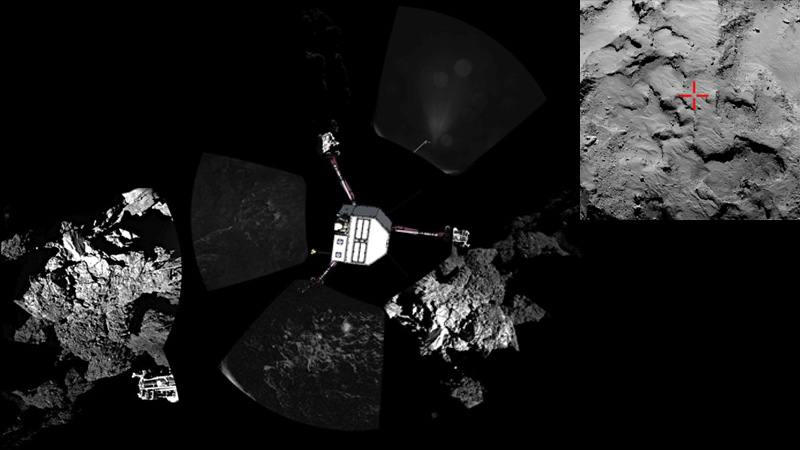
Wednesday, November 12, 2014, 8:03 AM PST, the European Space Agency’s (ESA) Rosetta spacecraft successfully launched the landing probe, Philae, to a landing on the surface of comet 67P/Churyumov-Gerasimenko, a historic first. Cheers, Rosetta and Philae!
On Thursday, the Rosetta spacecraft, in orbit around the comet, relayed from Philae the first-ever image from the surface of a comet—an extreme close-up of ancient terrain that goes back four and a half billion years, to the earliest times in our solar system. That picture, to me, is worth the entire 20 year effort to deliver Philae to the spot it now rests—and a wealth of data from other instruments on Philae is yet to come.
Exactly where the lander sits is not presently known. There were unexpected challenges during the landing operation, starting before Philae was even launched from its mothership, Rosetta, when it was discovered that a thruster on top the lander had failed. The thruster’s function was to help prevent the probe from bouncing off the comet’s surface upon landing. In the low gravity environment of the comet, a bounce speed of only three feet per second could send it floating back into space.
ESA operators decided to proceed with the landing despite the lost thruster, relying on other systems designed to make the lander stick to the comet: a harpoon anchor, shock absorbers and fastening augers in its landing gear.
Shortly after midnight on Wednesday, Philae separated from Rosetta and spent the next seven hours coasting at about two miles per hour to its target landing spot on the comet, landing site J. All that ESA operators could do was watch telemetry come in and wait, hoping for a textbook landing—although, this being a first-ever event, it’s not in any textbooks, yet.